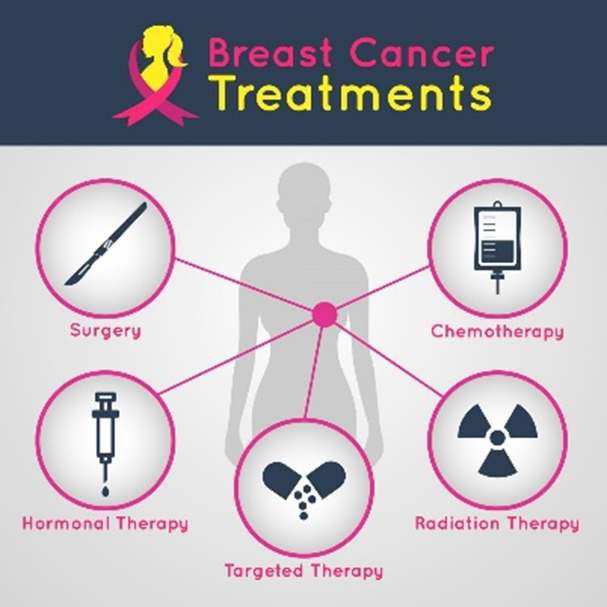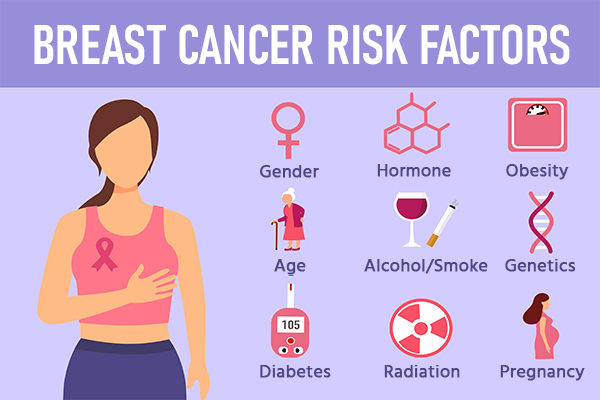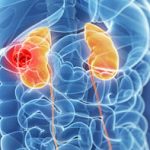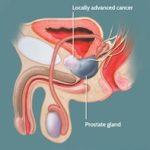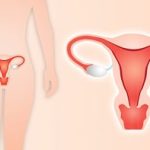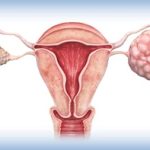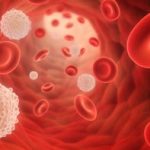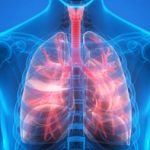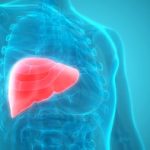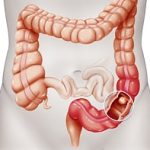BREAST CANCER TREATMENT
Most women undergo surgery for breast cancer and many also receive additional treatment after surgery, such as chemotherapy, hormone therapy or radiation. Chemotherapy might also be used before surgery in certain situations.
Breast cancer treatment in Iran
- Surgery (lumpectomy, mastectomy, lymph node removal)
Surgery is a treatment method to get rid of a breast tumor. If the breast tumor is removed surgically, along with a small margin of the surrounding healthy tissue, it is technically called ‘lumpectomy’. If a tumor is too big, it can be shrunken with chemotherapy before a lumpectomy. However, sometimes the cancer is too advanced to be cut out with a small incision in the breast, thus the entire breast needs to be removed surgically, which is called ‘mastectomy’. In most mastectomy surgeries, all of the breast tissue — fatty tissue, the lobules, ducts, and some skin, including the nipple and areola – are removed, but new techniques allow for a mastectomy without removing the nipple and areola (skin-sparing mastectomy and nipple-sparing mastectomy).
Mastectomy can be done on both breasts even if one of them is healthy. This is sometimes recommended for patients who have a very high risk of getting cancer in the other breast because of a family history or genetic predisposition. Most patients, however, will never get cancer in the other breast.
Sometimes a breast cancer patient needs to have one or several of her lymph nodes removed when the cancer has already spread to the nodes or there is a high chance that this happens in the future.
- Chemotherapy
- Just like other types of cancers, breast cancer can be treated using chemotherapy. Chemo is one of the most commonly used cancer treatments in Iran. Chemotherapy may be recommended for a breast cancer after the surgery if it has a high risk of returning or spreading to other parts of the body. Sometimes chemotherapy is applied before surgery in patients with large breast tumors to reduce the tumor to a size that makes it easier to be removed with a lumpectomy. In patients whose cancer has already spread to other parts of the body, chemotherapy can be used to alleviate the symptoms that the cancer is producing.
There are other types of breast cancer treatments such as radiotherapy, hormone therapy and targeted therapy (biological therapy), each of which has their own benefits and disadvantages. If you are suffering from a breast cancer and plan to have an effective treatment at an affordable price, do not hesitate to contact us for a free consultation and free quote for a mastectomy in Iran or other types of breast cancer treatments. Our medical consultants will get back to you as soon as possible to provide you with all the information you need
Do I have a breast cancer?
If you already know you have a breast cancer, you can skip this part. But what about those of you who are unaware of the dormant monster inside your body? We are going to first elaborate on breast cancer and its symptoms and then enumerate the risk factors that increase the likelihood of developing this widespread disease.
It’s been for years now that ‘breast cancer’ has become one of the most often heard types of cancers, to the point that even most ordinary people have heard about it at least a few times in their lives. No matter where you are from. Women from all corners of the world are increasingly hearing the footsteps of a common threat called breast cancer getting closer and closer to them.
What are the causes of breast cancer?
The exact causes of breast cancer are unclear, but there are some risk factors that influence the likelihood of developing it. The following risk factors may increase the chance of getting a breast cancer, but this doesn’t mean that people having them will get a breast cancer. Most women with these factors never get a breast cancer and 60-70% of breast cancer patients have no connection to these risk factors.
Genetic risk factors
- Gender: The chance of developing a breast cancer in women is 100 times greater than men
- Age: Two-thirds of breast cancer cases are diagnosed with the disease after 55.
- Race: Women of some races have a greater chance of being diagnosed with breast cancer (Caucasian women are more at risk, for example)
- Family history and genetic factors: If a close relative in your family has had breast cancer, especially before the age of 50, you will be more likely to develop a breast cancer too.
- Personal health history: The chance of getting breast cancer increases if you have been diagnosed with cancer in the other breast before. Also, if you have had abnormal breast cells such as atypical hyperplasia, lobular carcinoma in situ (LCIS) or ductal carcinoma in situ (DCIS) on your breasts, you will be at a higher risk of developing a breast cancer.
- Menstrual and reproductive history: Women who have begun their first menstruation at an early age (before 12), women with late menopause (after 55), women who have never given birth, and women who have had their first child at an older age have a higher risk of getting a breast cancer.
- Certain genome changes: Mutations in certain genes, such as BRCA1 and BRCA2, may heighten the risk of getting a breast cancer. If you have a family history of breast cancer, you should consider taking a genetic test to find out whether this is the case with you. Gene mutations can be passed to the children too.
- Dense breast tissue: If you have dense breast tissue, you are at a higher risk of getting a breast cancer. This also makes lumps harder to detect. Mammograms can be used to find out whether you have dense breast tissues.
Lifestyle and Environmental Risk Factors
- Lack of Physical Activity: If you have a sedentary lifestyle with little physical activity, you are more likely to develop a breast cancer than a person who does regular exercise.
- Being obese or overweight: Excess weight can increase the risk for breast cancer. The risk increases after menopause.
- Poor diet: Having an Unhealthy diet high in saturated fat and low in fruits and vegetables increases the risk for breast cancer.
- Drinking alcohol: Regular consumption of alcoholic beverages increases the likelihood of developing a breast cancer.
- Radiation to the Chest: Radiotherapy on the chest before the age of 30 may increase the chance of getting a breast cancer.
- Combined hormone replacement therapy (HRT): Women who take combined HRT for their menopause are at greater risk of breast cancer and their cancer is more likely to be detected at a more advanced stage.
Staging breast cancer
Once your doctor has diagnosed your breast cancer, he or she works to establish the extent (stage) of your cancer. Your cancer’s stage helps determine your prognosis and the best treatment options.
Complete information about your cancer’s stage may not be available until after you undergo breast cancer surgery.
Tests and procedures used to stage breast cancer may include:
- Blood tests, such as a complete blood count
- Mammogram of the other breast to look for signs of cancer
- Breast MRI
- Bone scan
- Computerized tomography (CT) scan
- Positron emission tomography (PET) scan
Not all women will need all of these tests and procedures. Your doctor selects the appropriate tests based on your specific circumstances and taking into account new symptoms you may be experiencing.
Breast cancer stages range from 0 to IV with 0 indicating cancer that is noninvasive or contained within the milk ducts. Stage IV breast cancer, also called metastatic breast cancer, indicates cancer that has spread to other areas of the body.
Breast cancer staging also takes into account your cancer’s grade; the presence of tumor markers, such as receptors for estrogen, progesterone and HER2; and proliferation factors.
Treatment
Your doctor determines your breast cancer treatment options based on your type of breast cancer, its stage and grade, size, and whether the cancer cells are sensitive to hormones. Your doctor also considers your overall health and your own preferences.Most women undergo surgery for breast cancer and many also receive additional treatment after surgery, such as chemotherapy, hormone therapy or radiation. Chemotherapy might also be used before surgery in certain situations. There are many options for breast cancer treatment, and you may feel overwhelmed as you make complex decisions about your treatment. Consider seeking a second opinion from a breast specialist in a breast center or clinic.
Operations used to treat breast cancer include:
- Removing the breast cancer (lumpectomy).During a lumpectomy, which may be referred to as breast-conserving surgery or wide local excision, the surgeon removes the tumor and a small margin of surrounding healthy tissue.
A lumpectomy may be recommended for removing smaller tumors. Some people with larger tumors may undergo chemotherapy before surgery to shrink a tumor and make it possible to remove completely with a lumpectomy procedure.
- Removing the entire breast (mastectomy).A mastectomy is an operation to remove all of your breast tissue. Most mastectomy procedures remove all of the breast tissue — the lobules, ducts, fatty tissue and some skin, including the nipple and areola (total or simple mastectomy).
Newer surgical techniques may be an option in selected cases in order to improve the appearance of the breast. Skin-sparing mastectomy and nipple-sparing mastectomy are increasingly common operations for breast cancer.
- Removing a limited number of lymph nodes (sentinel node biopsy).To determine whether cancer has spread to your lymph nodes, your surgeon will discuss with you the role of removing the lymph nodes that are the first to receive the lymph drainage from your tumor.
If no cancer is found in those lymph nodes, the chance of finding cancer in any of the remaining lymph nodes is small and no other nodes need to be removed.
- Removing several lymph nodes (axillary lymph node dissection).If cancer is found in the sentinel lymph nodes, your surgeon will discuss with you the role of removing additional lymph nodes in your armpit.
- Removing both breasts.Some women with cancer in one breast may choose to have their other (healthy) breast removed (contralateral prophylactic mastectomy) if they have a very increased risk of cancer in the other breast because of a genetic predisposition or strong family history.
Most women with breast cancer in one breast will never develop cancer in the other breast. Discuss your breast cancer risk with your doctor, along with the benefits and risks of this procedure.
Complications of breast cancer surgery depend on the procedures you choose. Breast cancer surgery carries a risk of pain, bleeding, infection and arm swelling (lymphedema).
You may choose to have breast reconstruction after surgery. Discuss your options and preferences with your surgeon.
Consider a referral to a plastic surgeon before your breast cancer surgery. Your options may include reconstruction with a breast implant (silicone or water) or reconstruction using your own tissue. These operations can be performed at the time of your mastectomy or at a later date.
Radiation therapy
Radiation therapy uses high-powered beams of energy, such as X-rays and protons, to kill cancer cells. Radiation therapy is typically done using a large machine that aims the energy beams at your body (external beam radiation). But radiation can also be done by placing radioactive material inside your body (brachytherapy).
External beam radiation of the whole breast is commonly used after a lumpectomy. Breast brachytherapy may be an option after a lumpectomy if you have a low risk of cancer recurrence.
Doctors may also recommend radiation therapy to the chest wall after a mastectomy for larger breast cancers or cancers that have spread to the lymph nodes.
Breast cancer radiation can last from three days to six weeks, depending on the treatment. A doctor who uses radiation to treat cancer (radiation oncologist) determines which treatment is best for you based on your situation, your cancer type and the location of your tumor.
Side effects of radiation therapy include fatigue and a red, sunburn-like rash where the radiation is aimed. Breast tissue may also appear swollen or more firm. Rarely, more-serious problems may occur, such as damage to the heart or lungs or, very rarely, second cancers in the treated area.
Chemotherapy
Chemotherapy uses drugs to destroy fast-growing cells, such as cancer cells. If your cancer has a high risk of returning or spreading to another part of your body, your doctor may recommend chemotherapy after surgery to decrease the chance that the cancer will recur.
Chemotherapy is sometimes given before surgery in women with larger breast tumors. The goal is to shrink a tumor to a size that makes it easier to remove with surgery.
Chemotherapy is also used in women whose cancer has already spread to other parts of the body. Chemotherapy may be recommended to try to control the cancer and decrease any symptoms the cancer is causing.
Chemotherapy side effects depend on the drugs you receive. Common side effects include hair loss, nausea, vomiting, fatigue and an increased risk of developing an infection. Rare side effects can include premature menopause, infertility (if premenopausal), damage to the heart and kidneys, nerve damage, and, very rarely, blood cell cancer.
Hormone therapy
Hormone therapy — perhaps more properly termed hormone-blocking therapy — is used to treat breast cancers that are sensitive to hormones. Doctors refer to these cancers as estrogen receptor positive (ER positive) and progesterone receptor positive (PR positive) cancers.
Hormone therapy can be used before or after surgery or other treatments to decrease the chance of your cancer returning. If the cancer has already spread, hormone therapy may shrink and control it.
Treatments that can be used in hormone therapy include:
- Medications that block hormones from attaching to cancer cells (selective estrogen receptor modulators)
- Medications that stop the body from making estrogen after menopause (aromatase inhibitors)
- Surgery or medications to stop hormone production in the ovaries
Hormone therapy side effects depend on your specific treatment, but may include hot flashes, night sweats and vaginal dryness. More serious side effects include a risk of bone thinning and blood clots.
Targeted therapy drugs
Targeted drug treatments attack specific abnormalities within cancer cells. As an example, several targeted therapy drugs focus on a protein that some breast cancer cells overproduce called human epidermal growth factor receptor 2 (HER2). The protein helps breast cancer cells grow and survive. By targeting cells that make too much HER2, the drugs can damage cancer cells while sparing healthy cells.
Targeted therapy drugs that focus on other abnormalities within cancer cells are available. And targeted therapy is an active area of cancer research.
Your cancer cells may be tested to see whether you might benefit from targeted therapy drugs. Some medications are used after surgery to reduce the risk that the cancer will return. Others are used in cases of advanced breast cancer to slow the growth of the tumor.
Immunotherapy
Immunotherapy uses your immune system to fight cancer. Your body’s disease-fighting immune system may not attack your cancer because the cancer cells produce proteins that blind the immune system cells. Immunotherapy works by interfering with that process.
Immunotherapy might be an option if you have triple-negative breast cancer, which means that the cancer cells don’t have receptors for estrogen, progesterone or HER2.
Supportive (palliative) care
Palliative care is specialized medical care that focuses on providing relief from pain and other symptoms of a serious illness. Palliative care specialists work with you, your family and your other doctors to provide an extra layer of support that complements your ongoing care. Palliative care can be used while undergoing other aggressive treatments, such as surgery, chemotherapy or radiation therapy.
When palliative care is used along with all of the other appropriate treatments, people with cancer may feel better and live longer.
Palliative care is provided by a team of doctors, nurses and other specially trained professionals. Palliative care teams aim to improve the quality of life for people with cancer and their families. This form of care is offered alongside curative or other treatments you may be receiving.

